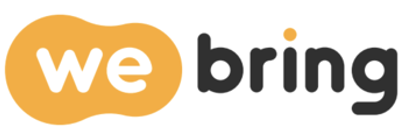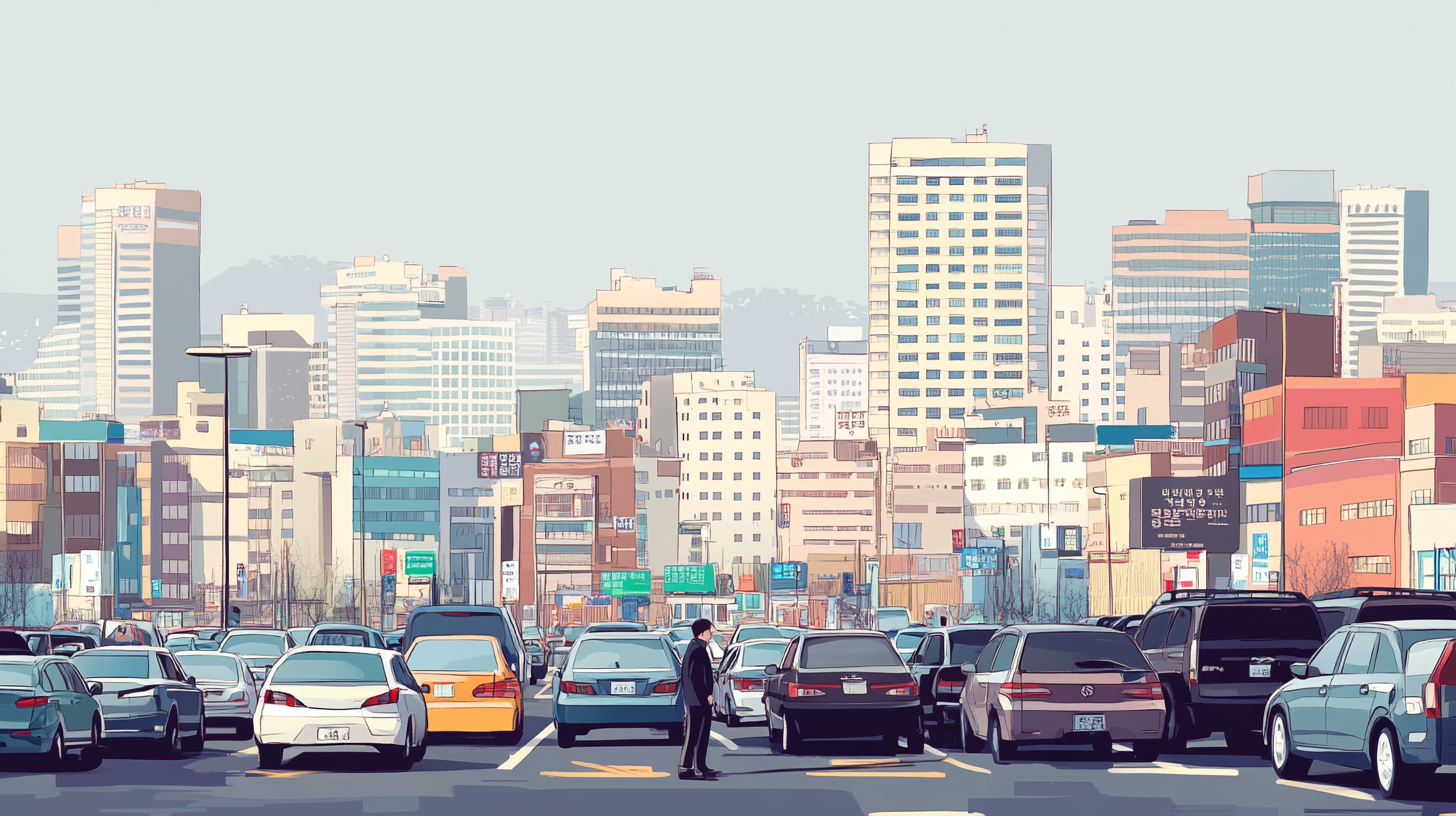Seoul is one of the most densely populated cities globally and is well known for its heavy traffic. Particularly in the downtown areas, finding parking can be challenging, and traffic congestion worsens during peak hours. However, with the right information, short-term car rentals can still be a convenient way to navigate the city. In this guide, we’ll provide essential “Seoul City Parking Tips” for foreigners, along with useful “Short-Term Rental Driving Tips” to help make your trips more efficient.
Types of Parking in Seoul and Their Features
Seoul offers two main types of parking facilities: public (government-run) parking lots and private (commercial) parking garages.
- Public parking lots are managed by the city or district offices, offering more affordable rates but often being small in size with limited locations. You can usually find them near City Hall, university areas, or cultural landmarks.
- Private parking lots, on the other hand, are operated by businesses or building owners. These lots typically charge between 3,000 to 6,000 KRW per hour, but they offer better locations and well-maintained facilities.
On weekends, tourist attractions and shopping districts can get particularly crowded. To avoid unnecessary hassle, it’s best to check available parking options before heading out. You can find information on public parking lots via Seoul’s official website, district office websites, or mobile apps like Naver Maps and Kakao Maps. If you’re a foreigner, using an English-supported navigation app can be a great way to search for parking spots.

Seoul City Parking Tip 1: Utilize Public Parking Discounts
While Seoul encourages the use of public transportation to ease traffic congestion, if you must drive, taking advantage of the public parking lot discount system can be highly beneficial.
- Discounts are often available for disabled persons, compact cars, low-emission vehicles, or families with multiple children.
- Foreigners may have limited eligibility for certain discounts, but if you’re renting a compact car (such as a Kia Morning or Chevrolet Spark), you may qualify for reduced parking fees.
Additionally, some public lots offer significant discounts during off-peak hours (usually from 10 PM to 7 AM). If you’re arriving late at night and leaving early in the morning, you can save on parking costs by taking advantage of these nighttime discounts. If your travel schedule is flexible, planning your parking around these discount periods can be a smart strategy.
Seoul City Parking Tip 2: Use Large Shopping Mall or Department Store Parking Lots
If finding parking in Seoul is difficult, consider using parking lots in large shopping malls, department stores, or supermarkets.
- Many shopping malls provide free parking for 2–3 hours when you meet a minimum purchase requirement.
- If you plan to dine or shop in these locations, you can secure free parking for a certain period and only pay for additional time if needed.
However, it’s important to note that this method is meant for actual shoppers and visitors. Using these parking lots solely for parking purposes without visiting the establishment is not advisable and may result in penalties.
Seoul City Parking Tip 3: Take Advantage of Park-and-Ride Facilities
As you drive closer to central Seoul, parking costs increase significantly, and open spots become rarer. A practical alternative is utilizing park-and-ride facilities.
- Large transfer parking lots are available at subway station hubs and major transit points.
- For example, there are parking facilities near the outer zones of subway Line 2 and key stops on Line 1 where you can park your car and use the subway to reach downtown Seoul.
If you’re a foreign visitor, purchasing a transportation card (T-Money, Cashbee, etc.) can be convenient for seamless subway and bus transfers. Since transfer parking lots are designed to encourage public transportation use, they generally offer lower rates than regular lots, with the possibility of additional discounts during certain hours. Using these facilities can save time, cut parking costs, and avoid traffic congestion in the city center.
Car Rental Tip 1: How to Use Hi-Pass (Electronic Toll System)
If you’re planning to drive beyond Seoul and use expressways, knowing about Hi-Pass, Korea’s automated toll collection system, will be beneficial.
- Hi-Pass lanes require a special device and card installed in the car.
- Some rental car companies provide vehicles pre-equipped with Hi-Pass devices, allowing you to pay tolls automatically and settle the fees upon return.
If your rental car doesn’t have a Hi-Pass device, you’ll need to use cash or a credit card at regular toll booths. Entering a Hi-Pass lane by mistake without the necessary equipment can cause confusion, so double-check your rental features and set your GPS accordingly before driving on highways.
Car Rental Tip 2: Avoid Rush Hour Driving in Seoul
Seoul’s traffic congestion can be overwhelming, especially during rush hours:
- Weekday peak traffic hours: 7–9 AM and 5–8 PM
- Weekend traffic hotspots: Myeong-dong, Itaewon, Hongdae, and Gangnam areas
For foreigners unfamiliar with Seoul’s road system, getting caught in these congestion periods can be frustrating. It’s best to avoid driving during peak hours and plan for extra travel time if visiting crowded areas.
Also, apps like Naver Maps and Kakao Maps provide real-time traffic updates. Using these can help optimize your route and avoid unnecessary delays.
Car Rental Tip 3: Use Mobile Navigation and GPS Efficiently
Seoul’s road layout includes radial and circular road structures, which can be difficult for first-time visitors to navigate. To simplify driving, take full advantage of mobile navigation apps or built-in vehicle GPS systems.
- Recommended apps: Kakao Navi, TMAP (both commonly used by locals with real-time traffic updates).
- Language support: Some apps may not have English options, so if you’re not comfortable with Korean, consider navigation apps with English settings.
While Google Maps can also be used, its real-time traffic data in Korea is limited compared to local apps. For the best navigation experience, it’s wise to use a combination of GPS tools.
Short-Term Rental and Parking: Planning Equals Savings
When using short-term rentals in Seoul, parking fees can add up quickly.
- Parking in major commercial areas can cost over 5,000 KRW per hour, and leaving your car all day may exceed 50,000 KRW.
- Researching your destination’s parking options in advance is key to selecting the most cost-effective solution.
If you need to park for an extended period, consider factoring in parking costs and accessibility into your travel plans. Since Seoul’s public transportation system is highly developed, a hybrid approach—driving only when necessary and utilizing subways or buses for other parts of your trip—can optimize both time and expenses.
Conclusion: With the Right Information, Driving in Seoul is Easy!
At first, Seoul’s heavy traffic and limited parking might seem intimidating. However, with the right strategies, including public parking discounts, transfer parking lots, and shopping mall parking, you can cut costs and save time.
When renting a car in Seoul, checking for Hi-Pass devices, using mobile navigation, and avoiding congestion will make your trip much smoother. With a little preparation, even foreigners driving in Seoul for the first time can navigate the city with confidence.
If you’re visiting Korea and considering driving, be sure to follow these parking and rental tips. Once you get familiar with the rhythm of the city, you’ll enjoy the freedom of exploring Seoul beyond public transport routes at your own pace! 🚗

WeBring Service : Provides personalized services to foreigners living in Korea
Exclusive offer: Introducing foreign car rental in Korea, WeBring-SoCar

